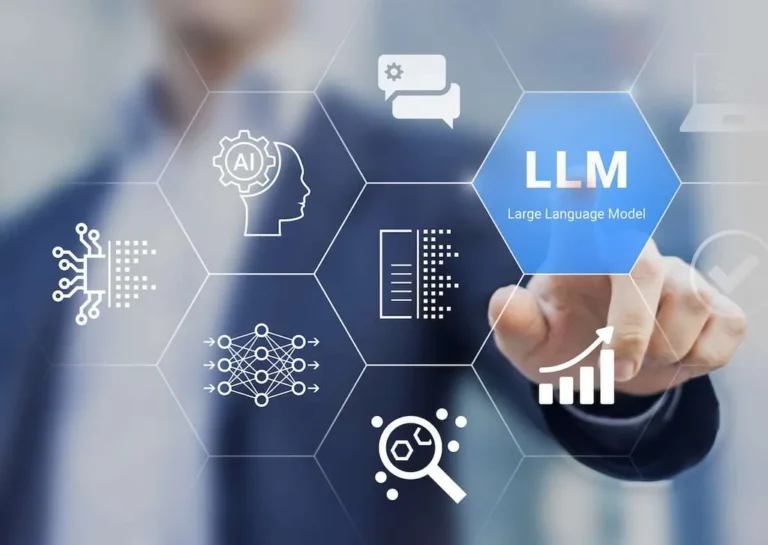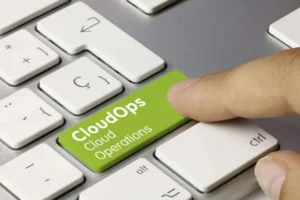LLMOps: A Complete Overview of the Best Practices

LLMs permit enterprises to access machine learning (ML) algorithms and build powerful systems designed to analyze human language. They process data from multiple sources and improve their performance over time. Businesses and institutions need to deploy the most efficient practices to ensure the stable functioning of these algorithms. In this guide, we will consider how Large Language Model operations (LLMOps) enable organizations to benefit from automated solutions and streamline maintenance of their LLMs.
What are LLMOps?
The term describes a set of practices and procedures that expedites building AI systems, lets engineers deploy them faster, and simplifies their management. LLMs are trained on extensive datasets. They generate human-sounding text, translate content, and answer user queries. However, managing them becomes increasingly complex when the number of libraries and sources increases.
LLMOps allows ventures to reduce operational expenses and avoid bloating staff. These routines may include information preprocessing, training LLMs, monitoring their performance, and making the necessary adjustments after deployment. DevOps engineers and other specialists work together on LLMOps platforms to create a single environment. This approach facilitates analysis, prompt engineering, and LLM management. It permits teams to automate the machine learning lifecycle. LLMOps focus on optimizing systems with large datasets. Foundation model operations (FMOps) are all about streamlining smaller and more specific algorithms.
When comparing LLMOps vs MLOps, it is easy to notice that the former is a particular case of the latter. MLOps focuses on the lifecycle of ML systems, while LLMOps prioritizes dealing with LLMs’ computational needs. Both sets of practices streamline data management, testing, training, deployment, and monitoring, as well as ensure higher observability.

We are confident that we have what it takes to help you get your platform from the idea throughout design and development phases, all the way to successful deployment in a production environment!
Why Use LLMOps?
These practices increase the efficiency of algorithms, diminish potential risks, and enable ventures to scale up their operations. Below, we have briefly outlined the main upsides of implementing these procedures.
High efficiency
Teams use LLMOps to simplify collaboration and use centralized platforms to share important insights. It expedites model deployment and product delivery. Ventures reduce computational expenses when they choose the most suitable architecture for their projects and streamline LLM training. Time-tested data management methods enable them to discover and organize information from reliable sources.
Automation lets businesses speed up iteration and feedback loops. It facilitates experimenting with different approaches and building, improving, and deploying products efficiently. Engineers improve LLMs’ learning rates and adjust their performance to help them make better decisions based on accurate info.
Lower risks
Complex LLMOps enable organizations to safeguard sensitive data, identify vulnerabilities, and prevent access of unauthorized third-party. Advanced practices ensure high transparency and full compliance with regulatory requirements, industry standards, and specific policies.
Scalable operations
Companies use LLMOps to expand the scope of their operations and deploy thousands of models simultaneously. They rely on continuous monitoring, deployment, and integration to minimize latency and augment user experience (UX).
LLM pipelines simplify cooperation between employees and departments and make release cycles shorter. They can be used by different teams, which results in higher standardization and enhanced collaboration. Enterprise-level apps process increased volumes of requests due to LLMOps.
Reduced expenses
Hyperparameter tuning empowers ventures to improve the accuracy of their LLMs. It leads to lower computational power requirements during training stages and allows firms to spend less on performance adjustments. ML algorithms typically have simple metrics. However, it’s more challenging to assess LLMs. BLEU and ROUGE metrics are used to assess their effectiveness.

Use Cases of LLMOps
Advanced operations make LLMs efficient and enable ventures to retrieve information and analyze it within a relevant context. They facilitate adjusting models to perform specific tasks and optimizing internal procedures. Here are the main applications of LLMOps:
- CI/CD pipelines simplify development, testing, and deployment. Dedicated tools like GitHub Actions permit teams to make their workflows more efficient, update and rollback LLMs, and perform versioning with ease. It lets them detect bugs early and spend fewer resources trying to fix them after the deployment.
- Data collection and prompt engineering. Teams gather information from multiple sources. They utilize powerful labeling tools to organize the insights they unveil and provide domain-specific information.
- Data storage and structuring. Ventures access advanced storage systems to simplify the retrieval of relevant information. EDA tools enable them to prepare and share insights to simplify machine learning.
- Model optimization for industry-specific tasks or domains. Specialists fine-tune LLMs’ performance with ease and ensure they run smoothly. They review different versions and use MLOps platforms to ensure collaboration between models. Constant monitoring enables them to identify attacks early and discover whether it’s possible to improve LLMs.
- Prompt analytic and testing. Prompt engineering involves using in-context learning tools and safeguarding data.
- Text-generation LLMOps tools. One can train LLMs so that they write code and automate tasks across the whole infrastructure. They document various processes and simplify translation between different languages.
As artificial intelligence (AI) models become more complex, companies need to discover how to manage them better using time-tested methods.
LLMOps Best Practices
When implementing LLMOps, one should develop an industry-specific strategy instead of trying to use a one-size-fits-all approach. Here are some tips to keep in mind:
- Cooperate with the open-source community to keep track of recent advancements. It will make it cheaper to update your systems and reduce downtime.
- Use dedicated GPUs to expedite calculations on extensive sets of data during LLM training. They facilitate running multiple operations simultaneously.
- Perform continuous monitoring and regular maintenance. Utilize special tools to detect subtle changes in performance. Analyze feedback and retrain LLMs to improve outputs.
- Utilize specialized software to process large datasets, recover info, track possible changes, and safeguard information with encryption. Ventures automate data collection and processing to augment the quality of their datasets and simplify transitioning between their versions.
- Find duplicates and ensure higher visibility of collected information. Ensure it can be shared across teams and departments.
- Adjust pre-trained models to focus on specific tasks. Deep learning optimization systems permit ventures to reduce expenses.
- Create regular backups. The strategy lets teams deal with system failures without affecting the functioning of algorithms.
- Identify and eliminate biases. The ethical approach to LLM development requires fixing biases in training datasets to avoid unreliable outputs.
- Analyze feedback. Improve training by relying on reinforcement learning and considering human feedback. Assess model performance by considering the reaction of the end-users.
- Simplify integration and cooperation between LLMs. Use advanced frameworks to link several LLM calls to handle complex queries automatically.
Building custom LLMs and fine-tuning them depending on a company’s needs is arduous without expert assistance. Reliable third-party service providers have teams of experts who know how to reduce latency and ensure a responsive UX. They develop and improve complex LLMs and streamline coordination between algorithms. Convenient tracking mechanisms simplify lifecycle management. Distributed training models they rely on help ventures handle issues, process data, and analyze LLM parameters.
Algorithmic models need to receive new high-quality data regularly to remain effective. Security audits, testing, and monitoring help developers unveil vulnerabilities and ensure security. Global Cloud Team develops enterprise-level AI solutions and deploys LLMOps practices to ensure their seamless functioning and compliance. Its experts build systems capable of following complex instructions and interpreting prompts with high accuracy within relevant contexts.
Top Articles
LLMOps: A Complete Overview of the Best Practices
I am here to help you!
Explore the possibility to hire a dedicated R&D team that helps your company to scale product development.






